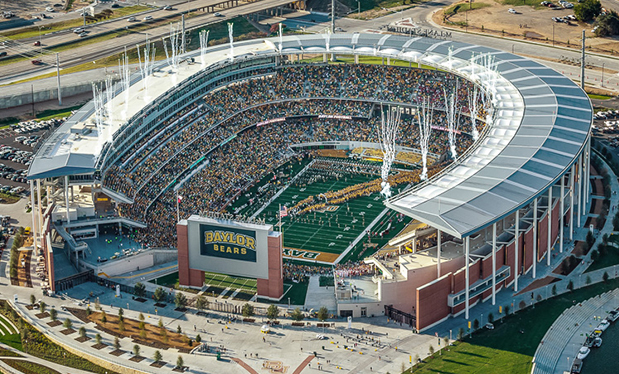It's no secret people prefer to be in a well-daylit environment as opposed to one that relies solely on electric light sources. According to the Mayo Clinic, Rochester, Minn., the amount of daylight we receive affects our brain chemistry and a lack of it can lead to seasonal affective disorder. People are happier in a space that offers comfortable, reliable natural daylight.
In addition to improving people's moods, installing daylighting systems can increase your profits while saving your customers money by reducing the reliance on electric lighting.
Savings
Buildings with properly designed daylighting and integrated lighting controls generate energy savings as a result of not powering the lights all day. Depending on where a building is located, it is realistic to daylight a space 60 to 90 percent of the occupied year, assuming typical 8 a.m. to 5 p.m. operating hours. According to a Buildings magazine article, "What You Need to Know About Daylighting," the energy savings for buildings with daylighting systems typically range from 15 to 40 percent.
The Center for Climate and Energy Solutions reports Pittsburgh-based Carnegie Mellon University's Robert L. Preger Intelligent Workplace laboratory had an upfront cost of $370,000 to install a daylighting system but saved almost $700,000 in energy and operating costs. The resulting gains in productivity were worth even more—as much as $14 million. According to the center, in a typical building, energy costs average $1.50 to $2.50 per square foot while salaries exceed $200 per square foot. Cutting energy use in half typically saves $1 per square foot per year while boosting productivity just 5 percent saves more than $10 per square foot.
Sustainability
Companies of all sizes are spending serious money to promote corporate sustainability to project an environmentally conscious image to employees, investors and customers.
There are many things that can be done to reduce the carbon footprint of a building or improve the sustainability metric. Visibility of a sustainable feature such as a daylighting system should be a consideration. Not many people who visit or work in a building recognize recycled content in carpet or a state-of-the-art HVAC system. But when a building is properly daylit, the sustainability aspect is clear and immediately can be experienced by everyone who enters the space.
Although energy savings and sustainability may be the reasons your customers initially opt for daylighting, it also can have significant, measurable effects on building occupants.
Physical effects
According to a 2014 study, "Natural Light in the Office Boosts Health," conducted by Northwestern Medicine,® Chicago, and the University of Illinois at Urbana-Champaign, office workers with more light exposure had longer sleep duration, better sleep quality, more physical activity and a better quality of life compared with office workers with less light exposure. The study highlights the importance of exposure to natural light for employees' health and the priority that should be placed on architectural designs of office environments with natural daylight exposure for workers.
"There is increasing evidence that exposure to light during the day, particularly in the morning, is beneficial to your health via its effects on mood, alertness and metabolism," says Phyllis Zee, M.D., a neurologist and senior sleep study specialist at Northwestern Medicine. "Workers are a group at risk because they are typically indoors often without access to natural or even artificial bright light for the entire day. The study results confirm that light during the natural daylight hours has powerful effects on health."
Mental effects
Research conducted by Cornell University, Ithaca, N.Y., suggests exposure to natural light may be the best medicine. In its study published in the July 2015 peer-reviewed HERD: Health Environments Research & Design Journal, Rana Zadeh, assistant professor of design and environmental analysis at Cornell University, discovered nurses who had access to natural light enjoyed significantly lower blood pressures, communicated more often with their colleagues, laughed more and had better dispositions than nurses who settled for large doses of artificial light.
"Maximizing access to natural daylight and providing quality lighting design in nursing areas may be an opportunity to improve safety through environmental design and enable staff to manage sleepiness, work in a better mood and stay alert," Zadeh says.
Improved satisfaction
In 2002, the Building Owners and Managers Association International and a group of sponsors, including the New Buildings Institute, conducted a survey about workplace performance and tenant satisfaction.
Building owners and managers reported tenant demand for "green" concepts, including better lighting and energy-efficient building systems, were a growing trend. Tenants surveyed revealed quality of lighting and access to natural light have a tremendous effect on how satisfied they were with their spaces. More than 50 percent of tenants reported they were not satisfied with the energy efficiency of their spaces.
The survey concluded environmental factors, including access to natural light, had the most effect on tenant satisfaction, and these factors also were the ones that fell into the "need to improve" category. Property owners and managers who help address their tenants' concerns about lighting and other environmental factors are more successful and profitable in the long term.
A business differentiator
Installing daylighting systems can serve as a differentiator for your roofing contracting business. Roofing contractors who install daylighting-related products not only increase their profits, but they also provide their customers with a way to make their environments healthier and more environmentally friendly. It can change the conversation with a client from who provides the lowest bid to who's taking the best care of the customer.
In addition, customers show off their installed daylighting systems to friends and family, which creates referrals for more business opportunities. Many manufacturers offer training for installing residential daylighting systems, and most have installation videos and training information available on their websites.
In the commercial realm, roofing contractors also can differentiate themselves from competitors. Tubular daylighting devices (TDDs) may be installed between photovoltaic panels, which is becoming more common, and installation typically is much simpler than skylights. No framing, structural changes, drywall or painting repairs are required.
There may be concerns regarding the penetration of roofing materials when installing daylighting systems, but this is no different than penetrations for HVAC and other vents. When installed correctly, TDDs don't leak or negatively affect roofing materials or the building envelope. Training regarding proper commercial installation is available through leading TDD manufacturers.
Selecting the right system
Selecting the right daylighting system for a space is crucial. Visual discomfort usually is the most important thing to keep in mind, which involves making sure the daylighting system does not provide direct sunlight or glare. Thermal discomfort also can be a concern because direct sunlight on work stations can add unwanted heat and make workers uncomfortable at certain times of the day or year.
The following is an overview of the three most common forms of daylighting:
Windows
The most common form of daylighting is windows. Being a vertical fenestration product, windows allow for views, which is their biggest advantage. Proper window design depends on building orientation and an understanding of how the sun moves throughout the day and year. Depending on what direction they are facing, two windows of the same size in the same building can have much different effects on occupants and operating costs.
Specific types of glass and coatings can be selected to minimize solar heat gain, but there often is a tradeoff in terms of visible transmittance. Fortunately, there are some great options for window coverings and automated shading controls that are available to help overcome glare and heat gain issues. Windows, by nature, are limited to a building's perimeter, so they don't solve the problem of bringing daylight deep into interior spaces.
Skylights
Large, monumental skylights definitely have their place with creating a dramatic effect. They can offer a view to the sky that connects people to the outdoors, or they can be made of translucent materials to help diffuse daylight and minimize heat gain.
Smaller skylights often are designed to diffuse light. As toplighting strategies, all skylights will require a relatively large roof opening and depend on the sun's orientation for effectiveness.
A drawback of most skylights is they are associated with shifting light patterns, as well as solar heat gain and loss as a result of the large openings required. Skylights also can be problematic when installed into a drop ceiling because they require a straight shaft made of drywall or similar materials that tend to lose most of the light as it reflects downward. Being square or rectangular, a skylight shaft cannot make any turns or navigate around plenum obstructions.
TDDs
TDDs are the most versatile of all daylighting strategies. They often are used in new construction, but they also are an easy solution for retrofit applications because they typically don't require structural modifications.
TDDs consist of a rooftop dome to capture sunlight, reflective tubing to transfer the light and a diffuser to spread the light. Their small apertures allow them to minimize thermal effects on a building. TDDs come in many sizes from a 10-inch diameter to a 29-inch diameter.
Advanced TDDs can offer dome optics to collect low-angle daylight and/or reject overwhelming high-angle sunlight, creating a more consistent and reliable daylighting experience. Some manufacturers also may offer photometric data or conduct their own light studies to allow accurate predictions of light levels and determine optimum product layout.
Depending on a tubing's specular reflectance, a TDD potentially can run a great distance and navigate multiple angles, allowing for maneuvering around plenum obstructions and making multistory and underground installations possible. TDDs are available in a variety of diffuser options for open or drop ceilings, allowing them to match the look of any space.
Most manufacturers also offer a dimmer option to control how much daylight enters a space. There now are advanced TDDs on the market designed to daylight extremely large, voluminous spaces with enhancements to bring useable light downward to a task level, something that has been problematic for traditional skylights. Keep in mind that when selecting the right daylighting strategy, the needs of building occupants should be the primary concern.
Do your homework
There are several companies that manufacture TDDs, and some are better than others. Poorly manufactured TDDs can lead to heating losses, leaks and cracks and can affect the amount of light transferred. Look for a system that has a long warranty, such as 10 years. That way, if any problems arise, there is an opportunity for recourse.
A vast amount of information is available online, but talking to manufacturers and other roofing contractors who have hands-on knowledge of TDD installation will help you find the best systems for your customers and business.
Shed some light
Everybody deserves daylight, and the technology now is available to deliver it into any space while maintaining occupant comfort and the overall design intent. Incorporating daylighting system installations into your business will increase your profits while saving your customers energy and money.
Neall Digert, PH.D., is vice president of product enterprise for Solatube International Inc., Vista, Calif.



